Photo by Reegan Moen for the U.S. Department of Energy courtesy Flickr Creative Commons
Solar advocates say rooftop and community solar will strengthen state’s energy infrastructure
November 19, 2021
It’s fair to say that a tremendous amount of national discussion has been focused on infrastructure in recent weeks. But in California, advocates for local solar have been talking about the state’s energy infrastructure for far longer, and they say distributed energy resources (DERs) are the key to strengthening California’s energy infrastructure while delivering broad societal benefits.
Advanced utility modeling commissioned by Local Solar for All and executed by grid experts Vibrant Clean Energy found that the continued growth of DERs – rooftop and community solar- plus battery storage, could save California ratepayers $120 billion over the next 30 years as well as make the grid more resilient and help the state meet climate and clean energy goals.
Jeff Cramer, Executive Director of the Coalition for Community Solar Access, a member of Local Solar for All, emphasizes that it’s not “either or,” it’s “both and” for the state to capture the full array of benefits that expanding DERs and battery storage would provide.
“More advanced models prove that local solar and storage bring significant cost benefits to the grid and that if California builds out large amounts of local solar and storage with utility-scale renewables it can stand to save over $100 billion dollars by 2050,” said Cramer. “In order to realize these savings, it’s imperative California regulators evaluate these programs via better models, continue to grow behind-the-meter solar and storage markets, and finally establish a competitive community solar program so all Californians can access local, low-cost solar.”
The complementary nature of DERs in the state’s energy portfolio is particularly salient because of the infrastructure challenges that plague California’s grid – namely, blackouts and wildfires, which are anticipated to multiply as a result of extreme weather events being caused by climate change.
California will need all the help it can get to tackle the climate crisis and expand its deployment of clean energy technologies including local solar. Passed in 2018, the “100 Percent Clean Energy Act” -commonly known as SB 100- sets a goal of a fully electric retail grid powered by renewable and zero-carbon energy by 2045. The law also requires California’s Energy Commission, Public Utilities Commission and Air Resources Board to “use programs under existing laws to achieve 100 percent clean electricity and issue a joint policy report on SB 100 by 2021 and every four years thereafter.”
According to Charlie Coggeshall, senior analyst for CCSA, the latter portion of the law creates an opportunity for the state Public Utility Commission to enthusiastically embrace policies that expand local solar production.
“Local solar has long played a critical role in cleaning up California’s grid and contributing strong economic benefits across the state. To meet the state’s ambitious goals, we need policies that maintain the sustained growth of the rooftop solar market while also expanding access to community solar.”
In addition to supporting net energy metering (NEM) for rooftop solar, CCSA has put forward a proposal in a pending NEM proceeding in California to create a community solar program that would credit subscribers similar to the model used for community solar in New York. The changes would also deliver new energy choices and opportunities for disadvantaged communities, renters, and residents of multi-tenant buildings.
Cramer calls on policymakers and regulators to eschew short-term thinking and take a long-term view on how investments in local solar can improve grid resilience, reduce costs, and provide societal benefits as well.
“California has an opportunity to start looking at return on investment. Through that lens, it’s clear that local solar returns ten-fold benefits back to the state. Our goal is to build a stronger, more resilient grid, and it’s also to build the lowest cost grid and expand access to the clean energy economy for all Californians.”




